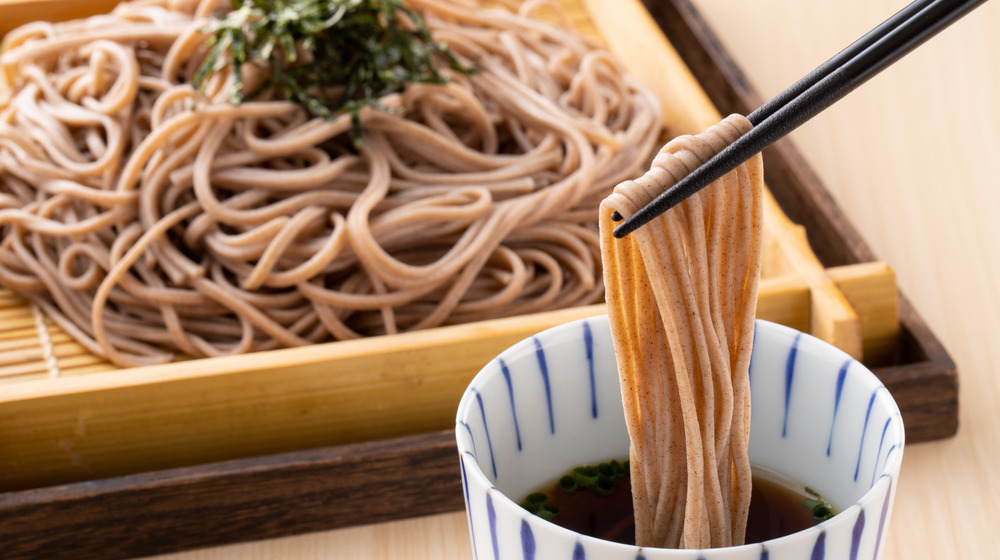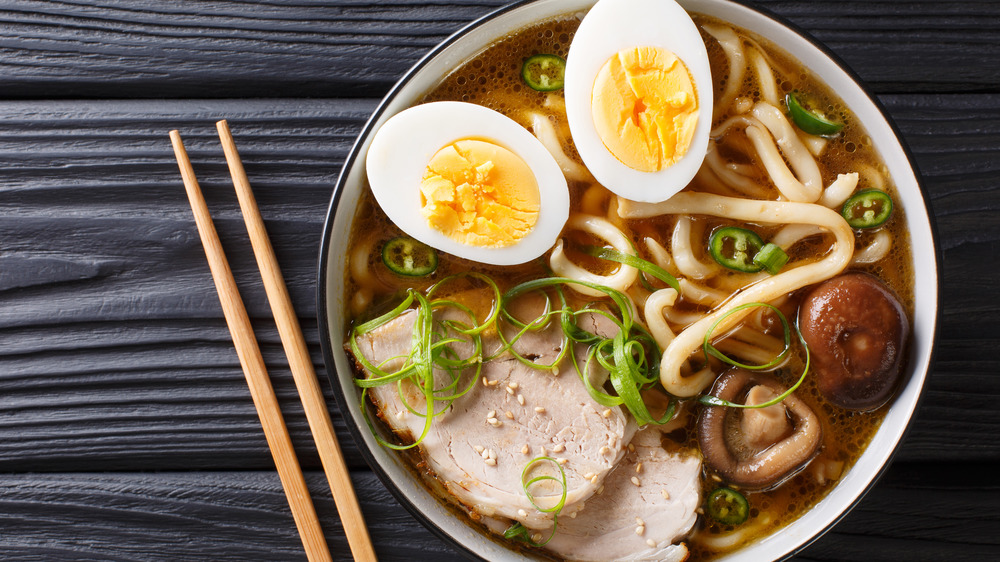The Real Difference Between Soba And Udon Noodles
You've likely heard of both soba and udon noodles — maybe you've even tried them. According to Matcha, both types of noodles are featured in a variety of Japanese dishes, but many travelers are unsure about these foods' ingredients. This begs the question, what are the real differences between soba and udon noodles?
Matcha says both noodles really differ in flavor, texture, and appearance. Soba noodles are created with buckwheat flour, which Healthline explains may benefit heart health, decrease inflammation, improve blood sugar control, and could even lower your risk of cancer. Livestrong writes that these noodles are also good for anyone dieting, due to their energy-restoring properties, low calorie count compared to other noodles, and high nutritional value. Soba noodles are incredibly thin and a light brown color.
Conversely, Matcha describes udon noodles as "thicker and chewier than soba." Udon noodle are made using wheat flour and saltwater to create a dough, which is then kneaded, cut into long noodles, and boiled in water. Udon noodles have a milder flavor and a reputation for being easy on the stomach.
How to eat soba and udon noodles
Depending on the season, soba noodles are usually eaten with either cold or hot soup. However, as Spoon University states, soba noodles are frequently sold dried and can be paired nicely with salads as well. Healthy and delicious? No complaints here.
Udon noodles are often compared to ramen noodles, in that they are normally presented in a hot broth or in cold tsuyu. Just One Cookbook explains that tsuyu is a Japanese soup base made with sake, mirin, and soy sauce, among other ingredients. Matcha states that one especially popular version of udon noodles in Japan is named Sanuki Udon, which people travel to Kagawa Prefecture just to eat.
Matcha explains that in the summer, cold noodles are popular dipped in tsuyu. After adding seasonings like onion and ginger, you grab your chopsticks and dunk the noodles into your broth a little at a time. In the winter, hot noodles are (for obvious reasons) the more popular choice. Diners add condiments like spring onions and schichimi spice for a more pungent flavor. Who else is now thinking about noodles for dinner tonight?!

